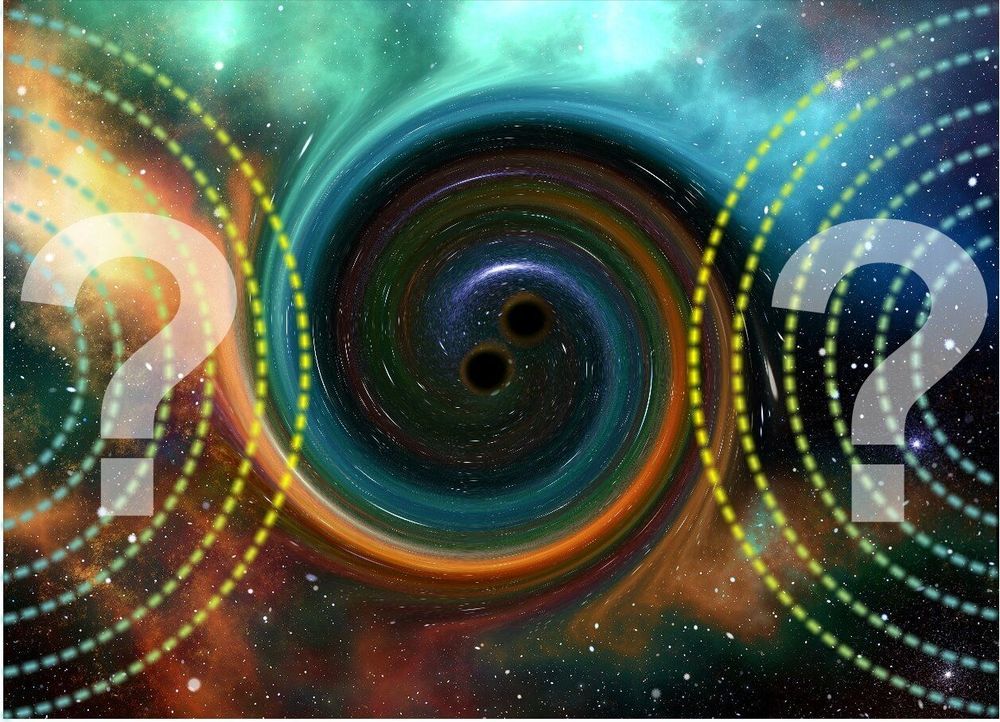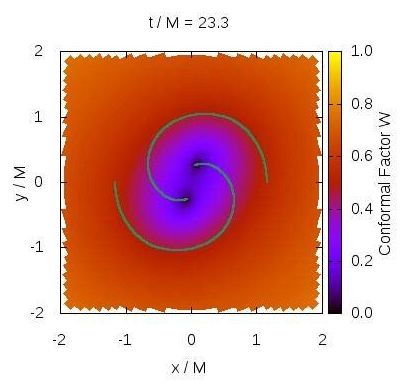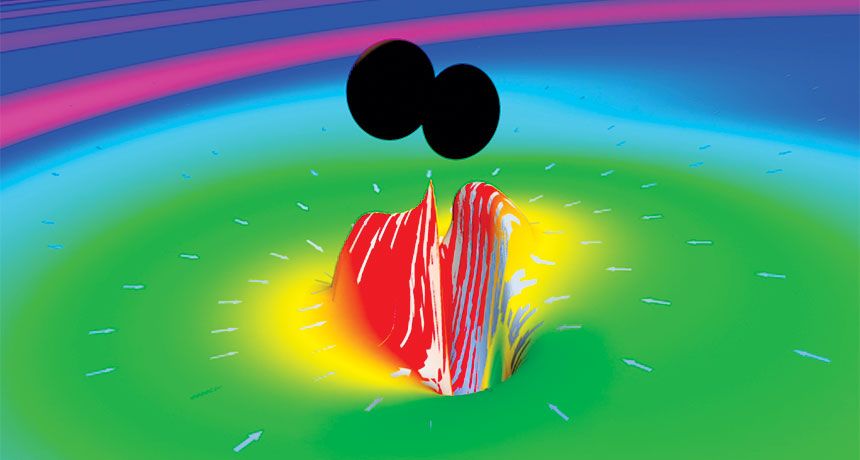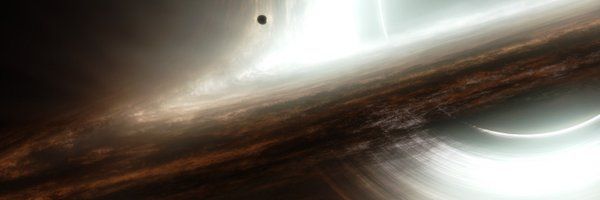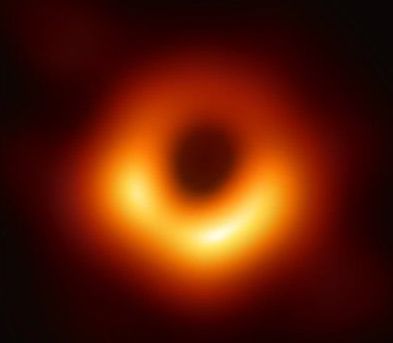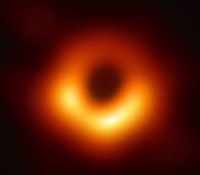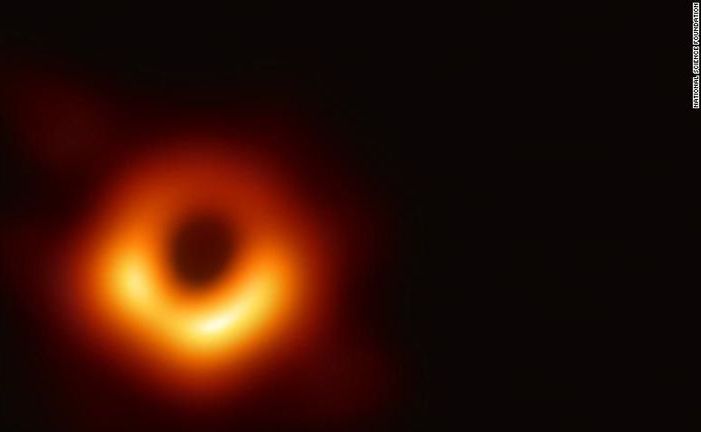Archive for the ‘cosmology’ category: Page 326
Apr 15, 2019
Gravitational echo phenomenon will become a key to the new physics, physicist says
Posted by Quinn Sena in categories: cosmology, mathematics, neuroscience, physics
Gravitational echoes may be caused by the collision of two black holes, and may indicate that these objects have completely new physical properties. This conclusion was made by RUDN physicists after a series of mathematical calculations. The scientists state that if the existence of the echo phenomenon is confirmed, astrophysicists would have to reconsider their view of compact space objects. The results of the study were published in Physical Review D.
According to the theory of general relativity (GR), any massive object distorts space-time. A similar effect is observed when a heavy metal ball is placed on stretched elastic fabric. The heavier is the ball, the deeper is the depression in the fabric. Similarly, the higher the mass of an object, the more it distorts space-time. Black holes are among the heaviest objects in the universe, and therefore distort space-time the most. When two black holes collide, gravitational waves spread out from the site of collision. They can be compared to rings on the water, or sound waves, but there is one important peculiar feature. Gravitational waves do not propagate spatially—they are themselves the oscillations of space-time.
Gravitational waves from the collision of two black holes decay with time, but on their final stage, they can cause the so-called echo—additional wave scattering. It can be compared to regular acoustic echo. The existence of such gravitational echo has not been confirmed yet, and there are different opinions about its possible source. A RUDN physicist, together with colleagues from the Czech Republic and Russia, assumed that if the existence of gravitational echo is experimentally confirmed, it would be the beginning of the new physics adding to GR.
Apr 15, 2019
DIY gravitational waves with ‘BlackHoles@Home’
Posted by Quinn Sena in categories: computing, cosmology, physics
Researchers hoping to better interpret data from the detection of gravitational waves generated by the collision of binary black holes are turning to the public for help.
West Virginia University assistant professor Zachariah Etienne is leading what will soon become a global volunteer computing effort. The public will be invited to lend their own computers to help the scientific community unlock the secrets contained in gravitational waves observed when black holes smash together.
LIGO’s first detection of gravitational waves from colliding black holes in 2015 opened a new window on the universe, enabling scientists to observe cosmic events spanning billions of years and to better understand the makeup of the Universe. For many scientists, the discovery also fueled expansion of efforts to more thoroughly test the theories that help explain how the universe works—with a particular focus on inferring as much information as possible about the black holes prior to their collision.
Continue reading “DIY gravitational waves with ‘BlackHoles@Home’” »
Apr 15, 2019
Black hole smashup generated yottawatts of power
Posted by Quinn Sena in category: cosmology
For a split second, LIGO’s black hole collision generated 36 septillion yottawatts of power, or 50 times the power from all the stars in the universe.
Apr 15, 2019
Travel through wormholes is possible, but slow
Posted by Xavier Rosseel in categories: cosmology, physics, space travel
A Harvard physicist has shown that wormholes can exist: tunnels in curved space-time, connecting two distant places, through which travel is possible.
But don’t pack your bags for a trip to other side of the galaxy yet; although it’s theoretically possible, it’s not useful for humans to travel through, said the author of the study, Daniel Jafferis, from Harvard University, written in collaboration with Ping Gao, also from Harvard and Aron Wall from Stanford University.
“It takes longer to get through these wormholes than to go directly, so they are not very useful for space travel,” Jafferis said. He will present his findings at the 2019 American Physical Society April Meeting in Denver.
Apr 12, 2019
At various places I have seen, or posted myself, posts about helping equal out gender representation in science and technology
Posted by Caycee Dee Neely in categories: cosmology, internet, science
An inevitable comment is usually something along the lines of women don’t need this kind of help because “insert foolish reason here.” The announcement of the black hole image shows just why this kind of action is needed.
The soon-to-be iconic picture of Katie Bouman reacting to the first image coming through was posted. Suddenly, the Internet trolls in defense of “male scientist” broke upon the scene, The goal to denigrate Bouman’s work on the project and turn the real “hero” of the discovery to another male scientists.
Apr 10, 2019
Event horizon shadow of supermassive black hole candidates are now possible via electromagnetic waves, thus transforming this elusive boundary from a mathematical concept to a physical entity that can be studied and tested via repeated astronomical observations
Posted by Michael Lance in categories: cosmology, mathematics
Apr 10, 2019
Science fact: Astronomers reveal first image of a black hole
Posted by Michael Lance in categories: cosmology, science
WASHINGTON (AP) — Scientists on Wednesday revealed the first image ever made of a black hole, depicting a fiery ring of gravity-twisted light swirling around the edge of the abyss.
The picture, assembled from data gathered by eight radio telescopes around the world, shows the hot, shadowy lip of a supermassive black hole, one of the light-sucking monsters of the universe theorized by Einstein more than a century ago and confirmed by observations for decades. It is along this edge that light bends around itself in a cosmic funhouse effect.
“We have seen what we thought was unseeable. We have seen and taken a picture of a black hole,” Sheperd Doeleman of Harvard, leader of a team of about 200 scientists from 20 countries, announced as the colorized orange-and-black picture was unveiled.
Continue reading “Science fact: Astronomers reveal first image of a black hole” »
In April 2017, scientists used a global network of telescopes to see and capture the first-ever picture of a black hole, according to an announcement by researchers at the National Science Foundation Wednesday morning. They captured an image of the supermassive black hole and its shadow at the center of a galaxy known as M87.
This is the first direct visual evidence that black holes exist, the researchers said. In the image, a central dark region is encapsulated by a ring of light that looks brighter on one side.
The massive galaxy, called Messier 87 or M87, is near the Virgo galaxy cluster 55 million light-years from Earth. The supermassive black hole has a mass that is 6.5 billion times that of our sun.
Continue reading “This is the first photo of a black hole” »
Apr 10, 2019
Breakthrough discovery in astronomy: First Black Hole image
Posted by Victoria Generao in categories: cosmology, innovation
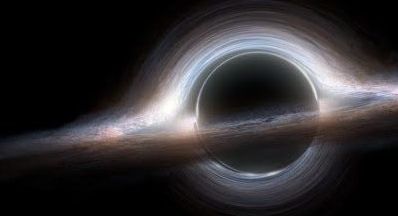
https://www.youtube.com/watch?v=pl9kmx_M9QU
On 10 April 2019 at 15:00 CEST (Brussels time) the European Commission will present a ground-breaking discovery by Event Horizon Telescope — an international scientific collaboration aiming to capture the first image of a black hole by creating a virtual Earth-sized telescope. EU-funded researchers play a key role in the project.
Six press conferences around the world will take place simultaneously In Europe, Commissioner Moedas and lead scientists funded by the European Research Council will hold a press conference in Brussels to unveil the discovery.
Continue reading “Breakthrough discovery in astronomy: First Black Hole image” »

